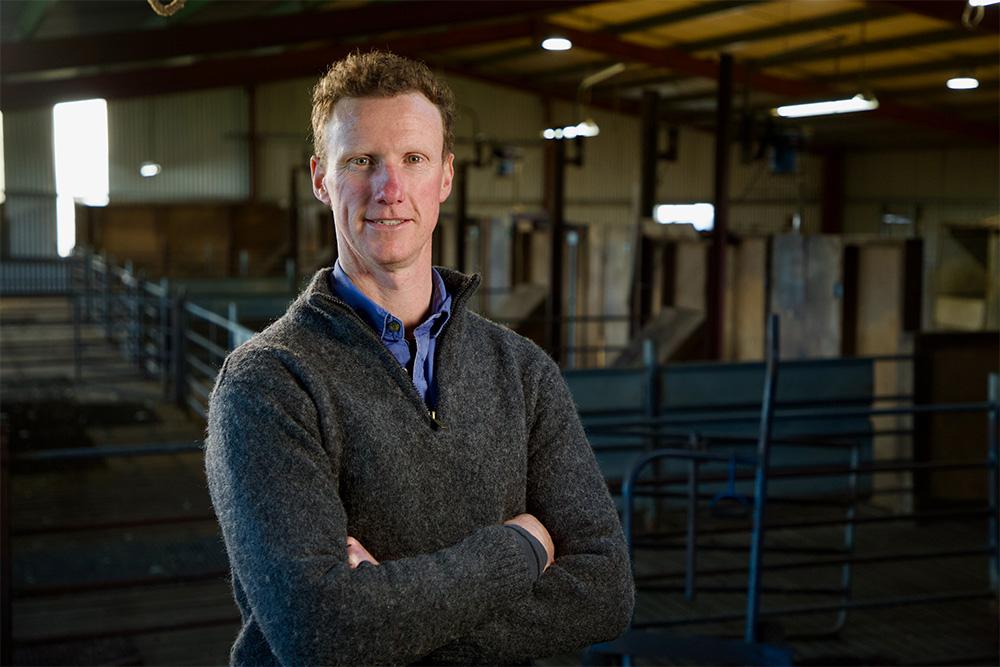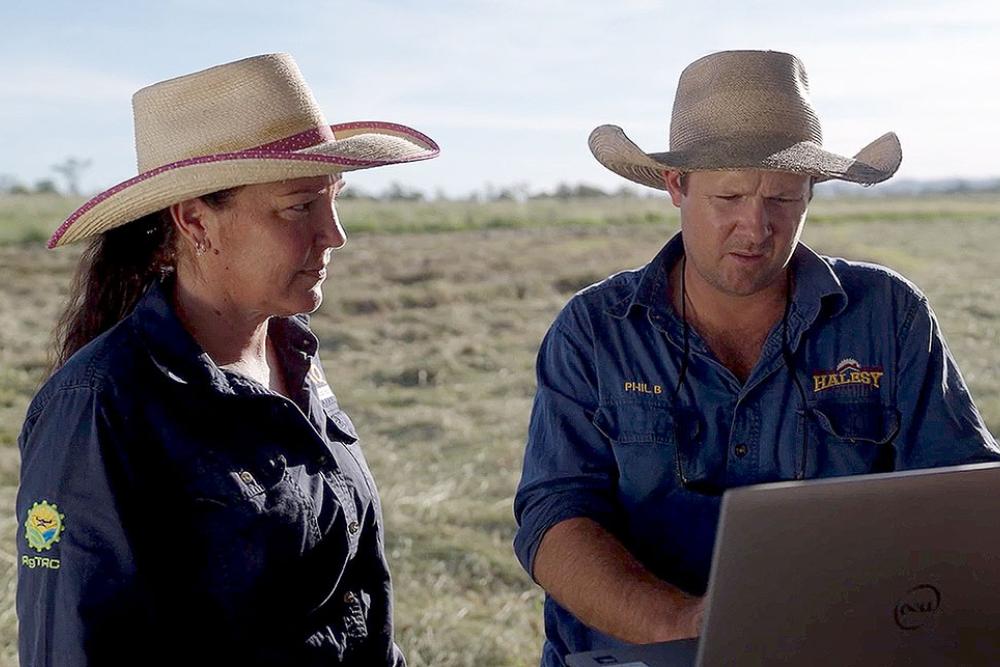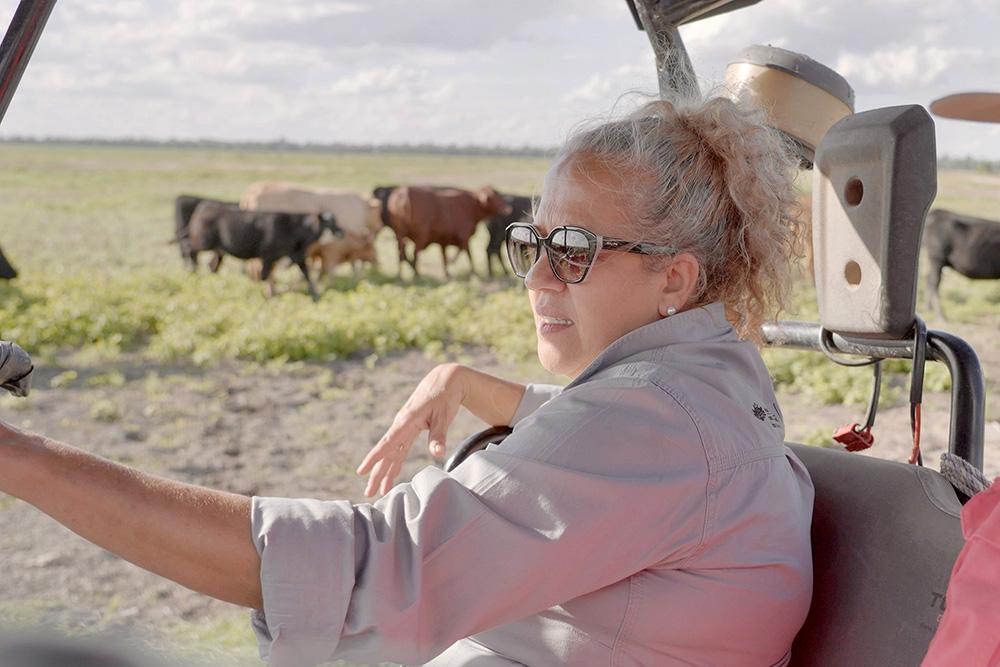All around Australia, producers keen to understand how they can rehydrate their landscapes are coming together to find out just how, via the Mulloon Institute’s Communities of Practice Project (CoPP).
For Fiona McBean, paddock-to-plate beef producer and CoPP Host south of Darwin in the Northern Territory, the CoPP has been a natural extension of her long-term commitment to regenerative agriculture. After hosting one of Mulloon Institute’s first NT visits, she’s continued to engage in practice days and events, finding great value in connecting with others. “When the CoPP came up, I jumped on board immediately and it’s been fantastic,” she says.
Lance Mudgway, Landscape Planner and Hydrologist with Mulloon Institute, highlights the value of community members coming together, to understand the benefits of rehydration projects, especially if undertaken at a catchment level. “The Community of Practice Project is a structured learning program…taking them through the steps and processes for planning and implementing a project on their own properties,” says Lance.
The program fosters a strong sense of connection among participants, encouraging open dialogue and shared learning. “The value in talking to neighbours, to people in your landscape who have done the work… the effect on the landscape in a positive way is so tangible,” Fiona adds.
The ‘Boots on Ground’ events are a key component of the CoPP. Producers like Mic Jacobi and Matilda Paesler attended the NT event, noting that what they learnt here will help them avoid common mistakes, improve land condition, and increase species diversity. The opportunity to learn from real examples and apply strategies directly to their own land makes the experience practical and empowering.
Fiona sums up why she has contributed significantly to this project. “If what I can do here can be adopted at scale, and the techniques that we are using here are absolutely able to be used anywhere in Australia or the world, so that we can keep more water on any land at all, whether it's 20 acres in Darwin or it's 200,000 on the Barkley….being able to lengthen your wet season, however short it might be, wherever you are, has huge profit impacts at the end of the day and is an amazing thing to be able to control to negate the effects of climate change.”
See more about how producers are coming together to build landscape resilience in the NT via the Mulloon Institute’s CoPP.
This project was funded under the Future Drought Fund’s Extension and Adoption of Drought Resilience Farming Practices Grants program and delivered by Mulloon Institute.
25 June 2025
Video duration: 8 mins 59 secs
Introduction
This is the transcript of a video case study produced by the Australian Government's Future Drought Fund (FDF). The video features Mulloon Institute’s Community of Practice project (CoPP) in the Northern Territory, demonstrating how the project, including the delivery of the ‘Boots on Ground’ events, is extending knowledge that will support producers to restore the function of natural water systems, improve productivity, and inspire sustainable land management through education and community collaboration. This project was funded by the FDF as part of the Extension and Adoption of Drought Resilience Farming Practices Grants program.
Learn more about the Future Drought Fund and Mulloon Institute - Community of Practice Project.
Transcript
[Recording begins]
Lance Mudgway [0:33]
My name's Lance Mudgway. I work for the Mulloon Institute as a landscape planner and hydrologist. My role is to plan and implement works and facilitate education programs in landscape rehydration.
The reason why landscape rehydration is important to landholders is because if you're healing the country and rebuilding the natural function of the country, that's building its resilience, which means you can manage through droughts and dry times a lot easier than you would otherwise. You're getting greater productivity and once you've got a more resilient system, more productive system, you've got better profits and a more resilient business as well.
Fiona McBean [1:11]
My name's Fiona McBean. I live at Old Cameron Downs, which is an hour south of Darwin. I live here with my partner Pete. We own and operate this property as a paddock to plate beef enterprise. We have a herd of Senepol cows, and we fatten their offspring and feed it into our paddock to plate business.
When we bought this property, there was already three paddocks, which were very close to the homestead that had been cleared in the 1960s, so we were actually quite depleted in natural infrastructures. We had no trees on these paddocks, we had no native species as such. It was very overgrown with weed.
We found that we had a spring head essentially on our property that was only running for two to three months of the year, and then it filtered down into an eroded gully. Through research, we figured that if we could regenerate the spring and keep the water underground for longer, it would self-perpetuate.
Lance Mudgway [2:10]
Fiona saw this floodplain’s quite dry and dehydrated, primarily because this creek was incised. The water goes shooting down the creek instead of spilling out on the floodway. So we saw that we needed to redistribute the water up on the slope, which we did with swale, and then basically stepping this water up so we get nice still pools, which then brings the water level up to spread it out onto the floodplain and we get this beautiful green growth on the system.
Fiona McBean [2:38]
Now the eroded gully is a fully functioning creek system that runs for almost 12 months of the year. The water is retained in the floodplains alongside the creek, keeping our place greener longer and obviously our cattle fatter for longer.
Lucy Bullock [2:54]
My name is Lucy Bullock and I work for Territory Natural Resource Management as the Sustainable Agriculture Facilitator.
Territory NRM works within community groups, and works with people to help them find other organisations that might have answers for them regarding nature-based solutions or sustainable land management practices. We also connect them directly with people in places like the Mulloon Institute or with researchers to help them work out what's best for them and their land.
Fiona McBean [3:25]
We were very fortunate about five years ago to be selected as a property to host one of the first on farm visits from Mulloon to the Northern Territory through TNRM, and from there we've just maintained a really great relationship with them being involved in other practice days and hosting events here and so when the communities of practice came up, I jumped on board immediately and it's just been fantastic.
Lance Mudgway [3:50]
The Community of Practice Project is a structured learning program based around our key education program, which is a two or three day bootcamp, which is an intensive program with landholders, taking them through the steps and processes for planning and implementing a project on their own properties.
That's followed by a mentoring program, which we spend one-on-one time with the landholders, assisting them through their project plan, and then here today for ‘Boots on Ground’ day, which is the end process where they'll come back together and look at some works actually happening on the ground.
Fiona McBean [4:25]
I really enjoy hosting events here. One of the key reasons is because we are a private enterprise. We've funded this ourselves. We’ve chosen to do the works ourselves, and because we are now six to eight years down the journey of doing this work, the outcome is so obvious.
Lance Mudgway [4:44]
What makes this site important, the educational aspect. People can come and see this and Fiona's got photos from earlier on before any works were done here and just to compare and see what it looks like now.
Fiona McBean [4:57]
The value in talking to neighbours, to people in your landscape who have done the work, who have proven that it is viable, it is possible, and the effect on the landscape in a positive way is so tangible.
Mic Jacobi [5:14]
The main reason I came today is because we've got a fairly blank slate to start with. We have some issues to repair, but we're basically trying to avoid creating issues in the first place. We think there's a big advantage for us both in productivity and just in looking after the land and just getting it right the first time round and trying not to make the mistakes that we don't have to make, if we listen to what other people can tell us about how to manage land.
Fiona McBean [5:41]
We've seen a huge increase in grass species. We've seen legumes come back into the landscape, which weren't there previously, and all of this helps with fatter cattle and greater profitability. A hundred percent ground cover for a hundred percent of time is our major goal. That's what will ultimately stop erosion and stop evaporation from our soils, and we are getting closer and closer to that every year
Matilda Paesler [6:10]
I wanted to attend the boots on ground today, so that I could learn some strategies to improve land condition and to increase species diversity.
They've been able to slow down that flow of water and spread it out across the landscape so they're able to capture it a lot more effectively, and it doesn't just all run off when you get those heavy down pours that we see up here in the wet season, you're able to capture that water and utilise it, which increases that species composition and has positive effects on the landscape.
Mic Jacobi [6:40]
This course has been particularly relevant because it's local, for me to come here today and learn practices in the local area, relevant to local production methods, local habitats, local rainfall events, local climate. It just makes it so much more applicable. It's something we can directly implement without having to fill in the gaps.
Lucy Bullock [7:01]
Landscape rehydration, drought resilience, keeping ground cover on is critical in these changing climate times and within agriculture. You need diversity above the ground. You need it below the ground to ensure that you can continue having a profitable business and it stays around for a long time for generations to come. That's sustainability.
Lance Mudgway [7:23]
This sort of work builds resilient communities it goes back to the ancient history of this country. We are part of the country, and the country's us, so we've got to look after the country.
Fiona McBean [7:33]
If what I can do here can be adopted at scale, and the techniques that we are using here are absolutely able to be used anywhere in Australia or the world so that we can keep more water on any land at all, whether it's 20 acres in Darwin or it's 200,000 on the Barkley. It really doesn't matter where you are to be able to do something to stop evaporation, to negate the effects of climate change, to negate the effects of bigger wet seasons, heavier rainfalls, or to a degree droughts in the north of Australia. So when we get a large dry spell in the middle of a wet season, three weeks with 45-degree temperatures, a hundred percent humidity, but no rain can be really damaging if we don't have these systems in place to hold the water that has already fallen during that season. So being able to lengthen your wet season, however short it might be, wherever you are, has huge profit impacts at the end of the day and is an amazing thing to be able to control to negate the effects of climate change.
Recording ends [8:59]



